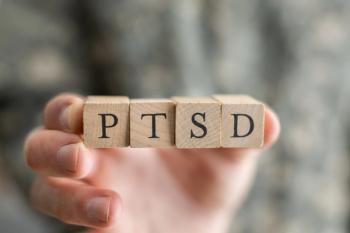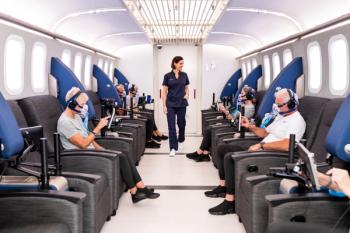
- Psychiatric Times Vol 25 No 2
- Volume 25
- Issue 2
Neurobiology of PTSD
This is the second installment in a 3-part series discussing the behavioral, cellular, and molecular characteristics of posttraumatic stress disorder (PTSD). The first installment described clinical aspects of PTSD and how these characteristics make understanding the underlying biological substrates so challenging. In this installment, I discuss progress addressing these challenges at the tissue and cell level. In the final installment, I will review potential genetic underpinnings of PTSD, with emphasis on potentially heritable risk factors.
As you may recall from last month's column, the 2 most enduring mysteries surrounding PTSD are why PTSD does not develop in so many persons who experience trauma, and for those in whom the condition does develop, why the experience can be so variable. Tissues mediating fear responses and memory formation are obviously involved. Those, in turn, inspire researchers who still salivate at the mention of the word "Pavlov." How do behavioral principles relate to our growing neuroanatomical knowledge of PTSD?
It may have been a while since you have considered the influences of conditioning on the amygdala, prefrontal cortex, and medial temporal lobe memory systems. I will thus start with a brief review of some of these influences and then move to a more explicit discussion of PTSD's potential neural substrates.
Pavlov revisited
When thinking of the long-term effects of PTSD, it is very tempting to think of associative learning responses, especially in the Pavlovian sense. You might recall Psychology 101 and the terminology that was usually employed concerning Pavlov's dogs (who learned to salivate in response to a tone in the anticipation of food). The "unconditioned stimulus" (US) was the food. The salivation, which required no learning from the dog, was termed the "unconditioned response" (UCR). When the food and the tone were paired with each other in a learning trial, the dog quickly learned to salivate in the presence of just the tone. The tone was then called the "conditioned stimulus" (CS) and the entrained salivation the "conditioned response" (CR) (Figure).
How does this apply to PTSD? There are many ways to apply behavioral models. For example, a soldier might react to horrific combat, which could serve as the US. His or her subsequent arousal and fear would be the UCR. As time goes by, even in the absence of further trauma, the soldier might continue to exhibit arousal and fear responses (which might be likened to the CR). The response may be elevated when he is confronted with specific environmental cues that he somehow associates with the previous trauma (the CS).
The idea of applying associative learning models to study PTSD was useful for researchers interested in human reactions, in part, because it converged nicely with animal studies. Findings from laboratory rodents have firmly established that neural information coming from US and CS neural substrates converge in the lateral nucleus of the amygdala. This region is highly reactive ("plastic") to external experiences and can be rewired by them. When an animal is exposed to the CS at a later time, the "newly" rewired substrates become activated. They, in turn, send information to the regions in the central amygdala.
That is a big deal. As you may recall from neurophysiology, the central amygdala serves as a behavioral "gateway." It has strong connections to the brain stem and hypothalamus, particularly to regions that control hormonal, autonomic, and central arousal responses. In processing external threats, the amygdala is the key biochemical clearinghouse for the circuitry by which corticotropin, cortisol, and various catecholamines are eventually dumped into the vasculature (see Figure). All these help the animal manage the perceived threat.
Is any of this relevant to humans? In the past decade or so it has become clear that our amygdala plays a similar role in mediating the types of fear conditioning first observed in animals. The key finding was that amygdalar damage inhibited the ability of the human brain to become conditioned to fear. These data complemented functional MRI findings in healthy subjects, which showed that exposure to fear-conditioned stimuli led to amygdala activation. Some of these fear responses appeared innate, or at least untrained. The amygdala could be activated by unlearned threats--fearful or angry faces are the best described--in healthy, nontraumatized populations. It was also shown that the processing could be unconscious. It was not necessary to bring a stimulus into awareness for either conditioned or unconditioned threats to elicit robust threat responses.
You might hypothesize from these findings that patients with PTSD would have amygdalar responses that are unusually sensitive to activation compared with controls. That is exactly what you find. When examined, the amygdalae of healthy volunteers and trauma survivors in whom PTSD did not develop had much higher activation thresholds than did those of patients with PTSD. Given that healthy persons can react to trauma outside their awareness, it is possible that patients with PTSD are susceptible to specific cues that also lie outside their awareness, which may rob such patients of any consistent predictive power over their reactions. And it may explain why some patients with PTSD suddenly react catastrophically to environmental stimuli, even though no familiar trigger is in sight.
This says nothing about whether such sensitive activation thresholds occur as a result of the trauma or were lurking as a preexisting condition and were simply revealed by the trauma. I will consider this problematic question in a few paragraphs.
Prefrontal cortex
As mentioned, PTSD does not develop in most persons who experience traumatic events. Most show a dramatic decline in severe symptoms within 90 days. Given that PTSD can last for decades, the disorder is often described as an operational failure of the recovery mechanisms. Attempts to understand such failures naturally incited researchers to investigate the neurological substrates behind normal recovery mechanisms.
One of the most fruitful of these investigations involved the understanding of behavioral extinction, first in animals and then in humans. It is part of the behavioral canon that fear responses can be attenuated, if not outright eliminated, by continuous exposure of the CS without its accompanying US. Researchers now know this to be an active process, with well-characterized neurological substrates and regulatory circuits.
Experiments with laboratory animals demonstrated that the active extinction behaviors could be disrupted by damaging specific regions within the medial prefrontal cortex (mPFC). Similar results can be obtained with pharmacological reagents that disrupt memory storage activities within the mPFC or the amygdala. Other studies using rodents demonstrated that chronic stress can lead to hypertrophy in the amygdala and dendritic hypertrophy in the mPFC. This suggests that exposure to chronic stress leads to a crippling of the circuits involved in typical extinguishing behaviors.
Similar results have been obtained with humans. Noninvasive imaging experiments in patients with PTSD demonstrated a dramatic inhibition of normal subgenual anterior cingulate cortex activity within the mPFC in response to laboratory-induced stress. This inhibition was accompanied by a measurable increase in amygdalar responses, confirming previous studies. Of great interest to researchers was the reaction of PTSD patients' brains to photographs of faces with specific emotional competencies. Patients showed a negative association in the activatable circuits between the amygdala and mPFC in response to fearful versus happy faces, for example.
The data appear to outline a neurologically "perfect storm" for patients with PTSD. Their amygdalar responses are greatly elevated because of external threats that are occurring while their ability to inhibit those responses is being disrupted. It is possible that one is a direct result of the other (both directions have been hypothesized).
One of the most interesting findings in this line of research was that the sizes of human mPFC areas were correlated with the competency of the extinction experience. There were true individual differences in attenuating abilities. This suggested to some researchers that there was a biological explanation for the wide variations between patients typically observed with PTSD.
The hippocampus
Given the horrific, intrusive memory experiences that occur with PTSD, it was natural for researchers interested in hippocampal function to explore the role of this part of the brain in the disorder. Early studies showed that patients with PTSD had smaller hippocampal volumes than unaffected controls, often accompanied by altered structural morphologies. These studies were consistent with molecular findings demonstrating the presence of neuronal death in response to long-term cortisol exposure. It was tempting to conclude that the memory changes associated with PTSD came from toxic overexposure of hippocampal tissue to cortisol.
As I discussed in the last column, that conclusion was premature. Cortisol levels actually go down in many persons in the minutes or hours after experiencing the traumatic event. If PTSD is understood as a disruption in the normal recovery processes, any molecular explanation must take into account long-term, persistent changes in fear response after the trauma.
Caution must also be taken when invoking causal explanations. It can be very difficult to characterize the association of an observed biological change (such as hippocampal shrinkage) with an external experience (such as combat). Is the observed shrinkage an abnormal pathological consequence of combat? Or is it a normal adaptive, but perhaps uncharacterized, response to combat? Does the shrinkage predate the experience, and is it simply a risk factor of PTSD if combat is experienced?
Earlier studies did not distinguish between these 2 explanations. However, 5 years ago, a group of researchers decided to investigate, and I wrote a column about this work.1 A group of researchers looked at identical twins, 1 who had been exposed to combat (Vietnam era) and 1 who had not.
The findings were a stunner. Vets who had smaller hippocampi were much more likely to have PTSD than those with more typical (larger) volumes. This seemed to confirm the idea that elevated stress could cause brain damage. The truly significant finding of this work, however, came from an examination of the brains of the identical siblings who had not experienced combat. They also had smaller hippocampal volumes, but they did not have PTSD.
Researchers began to hypothesize that hippocampal volume was a risk factor for PTSD. Subsequent data provided strong support for this idea and may even explain 2 old observations. Reduced hippocampal volume has long been associated with lower IQ--and people with lower IQ tend to be more susceptible to PTSD than those with higher IQ.
Results such as these have caused some to wonder about a potential genetic predisposition for PTSD. Do such studies suggest any role for heritability? The answer is no. But other studies do provide hints that genetic explanations are just around the corner. Next month, in the final installment, I will drop down to the level of the gene and discuss some very exciting, and very frustrating, molecular biology.
Dr Medina is a developmental molecular biologist and private consultant, with research interests in the genetics of psychiatric disorders.
References:
1. Medina J. Hippocampal volume and predicting PTSD. Psychiatric Times.2003;20(2)3: 8-11. *
Articles in this issue
almost 18 years ago
Between Patientsalmost 18 years ago
Washington Reportalmost 18 years ago
The Journey of the Locum Tenensalmost 18 years ago
Through a Glass, Darkly? A Look at Psychiatry's Futurealmost 18 years ago
Posttraumatic Stress Disorder in Veteransalmost 18 years ago
Psychopharmacology in the Decade Aheadalmost 18 years ago
A Beginning Biology of Beliefs?almost 18 years ago
Developing an Effective Treatment Protocolalmost 18 years ago
Evidence Grows for Value of Antipsychotics as Antidepressant Adjunctsalmost 18 years ago
Cannabinoids and PainNewsletter
Receive trusted psychiatric news, expert analysis, and clinical insights — subscribe today to support your practice and your patients.




